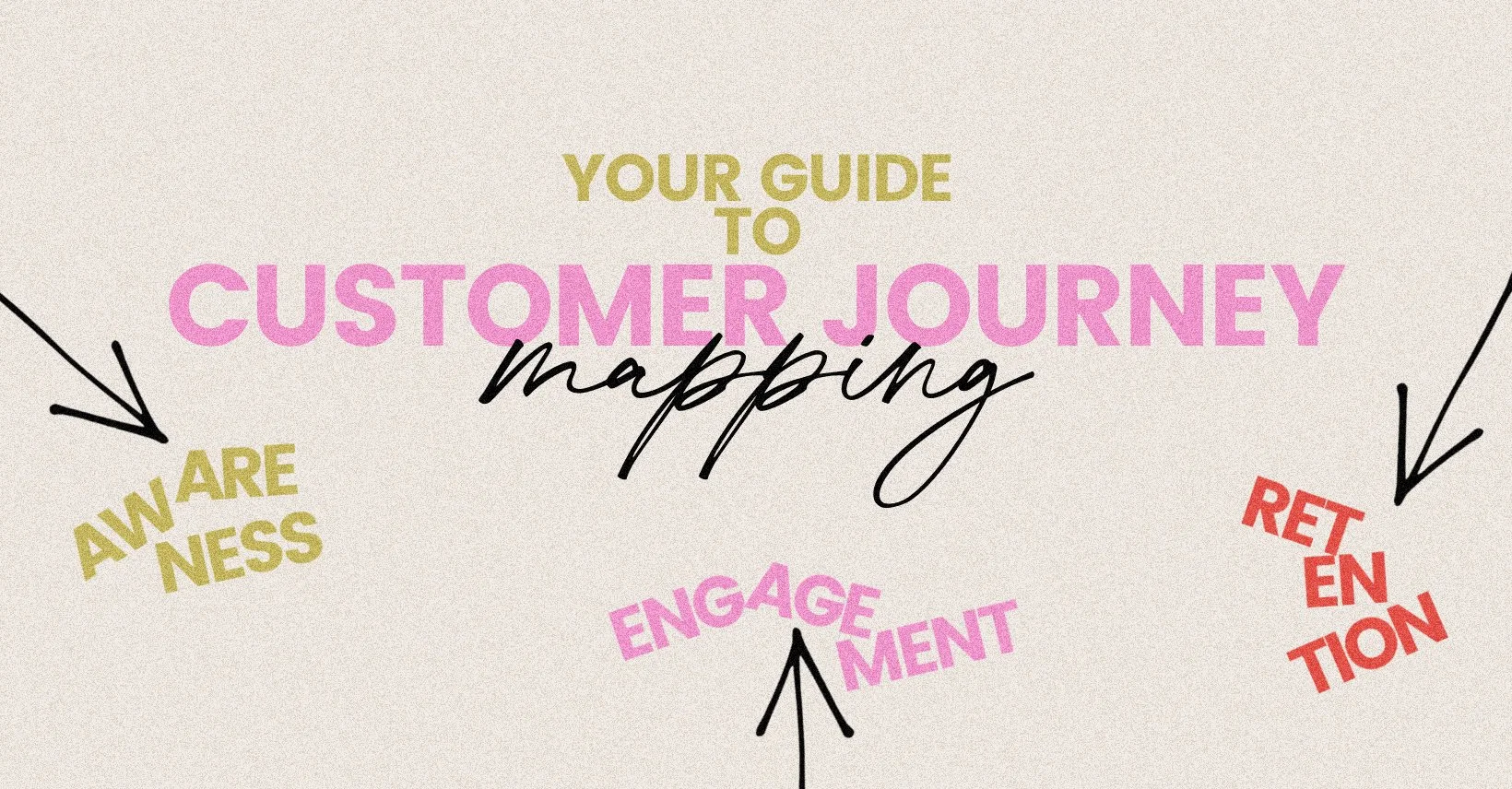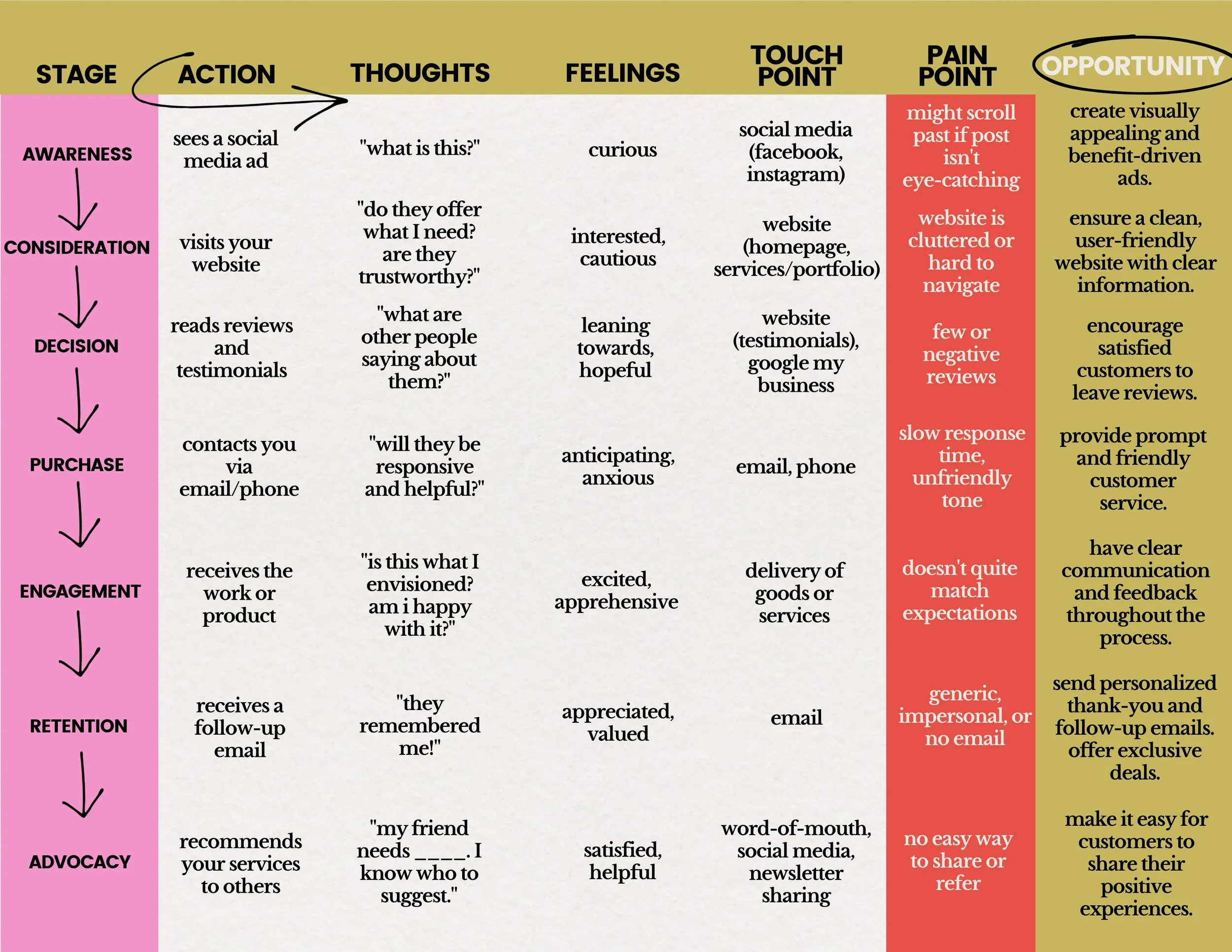turn your browsers into buyers: your guide to customer journey
Ever wondered what your customers really experience when they interact with your small business? Understanding their journey – from first hearing about you to becoming a loyal fan – is crucial for building a strong brand and fostering lasting relationships. That's where customer journey mapping comes in.
Imagine walking in your customers' shoes. What do they see? What do they feel? What hurdles might they encounter? By visualizing these steps, you can identify key moments where your brand can shine, address potential pain points, and ultimately create a more satisfying experience.
Customer journey mapping helps you:
1) define your ideal customer
This initial step forms the bedrock of your customer journey map. Take a moment to deeply consider who your perfect customer truly is. Think beyond basic demographics like age and location. Delve into their psychographics: what are their values, interests, and lifestyle? What are the specific problems they face that your small business can solve? Understanding their goals and aspirations will further refine your focus. Finally, consider their online habits – where do they typically spend their time on the internet, which platforms do they engage with, and what kind of content resonates with them? Knowing this level of detail will allow you to tailor your entire customer journey to attract and satisfy the right people.
2) outline the stages of their journey
This involves breaking down the entire interaction a customer has with your business into distinct phases. Begin by mapping out the very first point of contact – how do potential customers become aware of your existence? Next, trace their steps as they move into the consideration phase, actively researching and comparing their options, which might include your business. Then comes the crucial decision stage, where they weigh the factors influencing their choice, ideally leading them to select your services or products for the purchase/engagement. The journey doesn't end there; consider the retention phase, focusing on how you keep customers coming back. Ultimately, aim to cultivate advocacy, where your satisfied customers become enthusiastic promoters of your brand.
3) identify touch points at each stage
this is where you pinpoint the specific interactions a customer has with your business throughout their journey. At the awareness stage, consider where your brand makes its initial visual impact and what kind of messaging first captures their attention. During consideration, evaluate if your website and online presence consistently reflect your brand and if your reviews align with your core values. In the decision phase, think about whether your pricing and how you present your offerings align with your image, and if your story resonates. Throughout the purchase/engagement phase, ensure the entire experience feels seamless and consistently branded, with your communication reflecting your voice. For retention, your follow-up efforts should be personalized and on-brand, potentially fostering a sense of community. Finally, consider how you encourage and acknowledge your advocates, reinforcing their positive association with your brand.
example customer journey map
4) Analyze the Customer Experience
Once you've outlined the journey and identified the touch points, it's time for critical analysis. Put yourself in your customer's shoes and honestly assess the experience at each stage. What potential pain points might they encounter – are there any confusing processes, frustrating interactions, or unmet expectations? Conversely, identify the moments of delight – what aspects of your brand or service truly stand out and create a positive impression? Think about how your branding can directly address the pain points and further enhance the delightful moments. Finally, critically examine all touch points for inconsistencies in your branding. Ensuring a unified and cohesive brand experience across all interactions builds trust and recognition.
5) develope actionable insights
The final step is to translate your customer journey map and analysis into tangible actions. Based on your findings, determine the specific branding improvements you can implement. This might involve refining your messaging, updating your website visuals, or streamlining your customer service processes. Consider what kind of content you can create to better support and guide your customers at each stage of their journey. Finally, develop a clear strategy for ensuring a consistently positive brand experience across every interaction, reinforcing customer loyalty and driving business growth.
ready to map your own journey?
i've created a Downloadable PDF Guide with Prompts to help you gather the essential information. This guide will walk you through defining your ideal customer, outlining the stages of their journey, and identifying critical touchpoints and opportunities for improvement.


